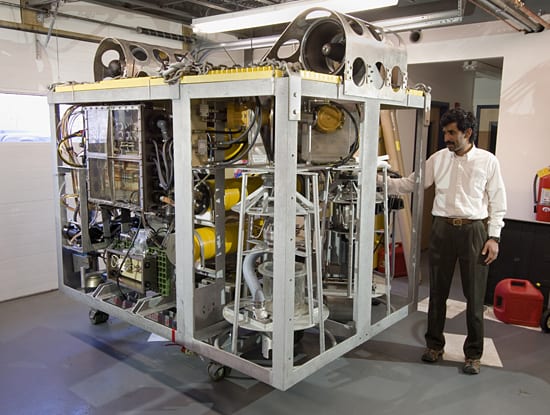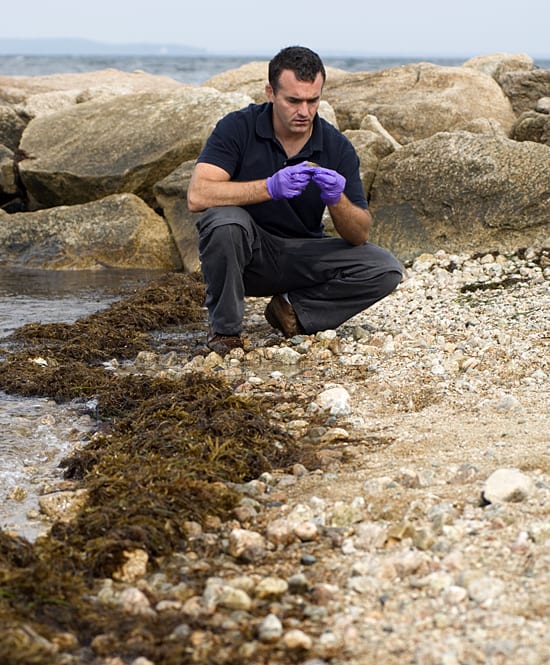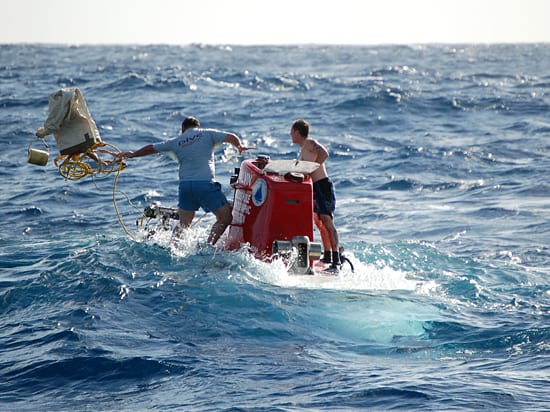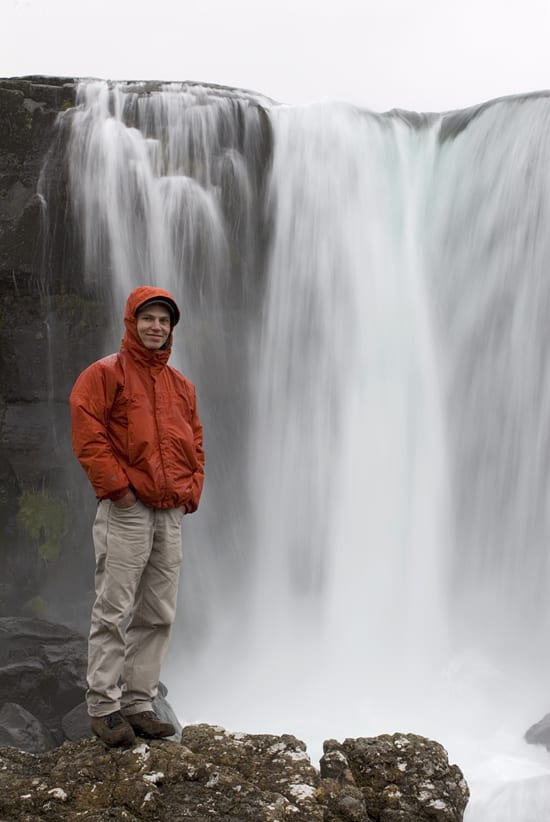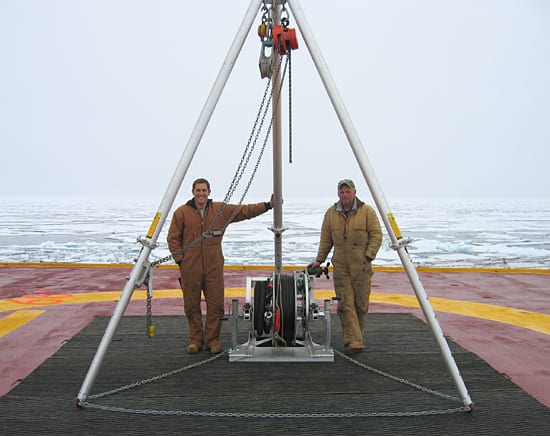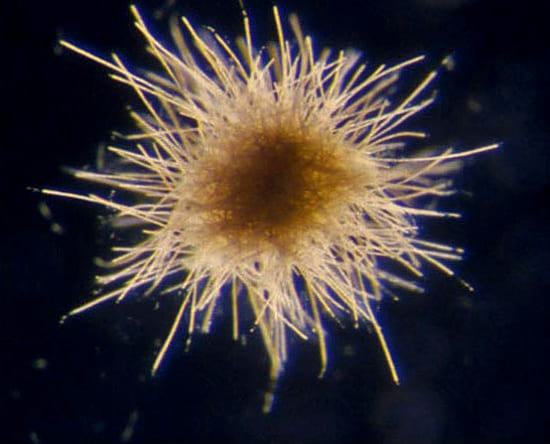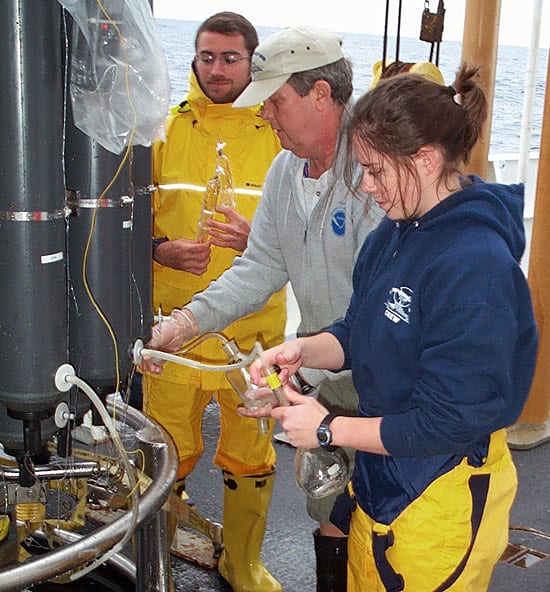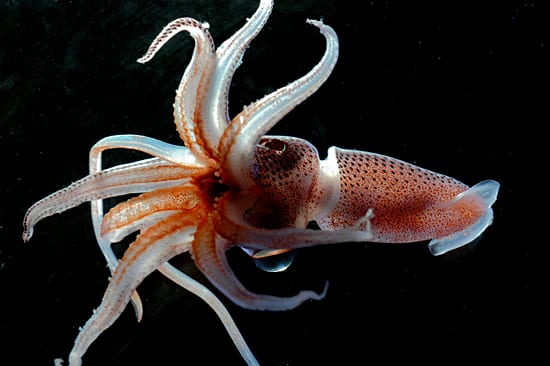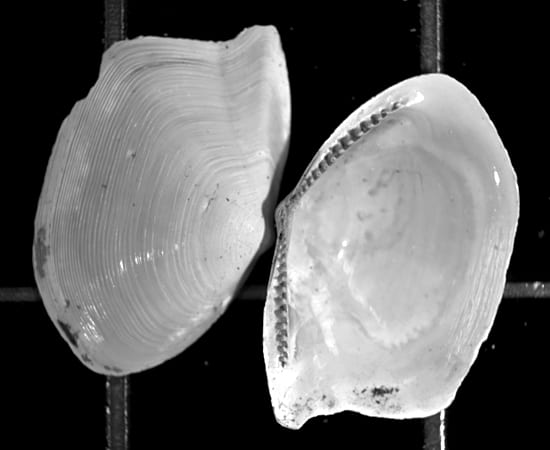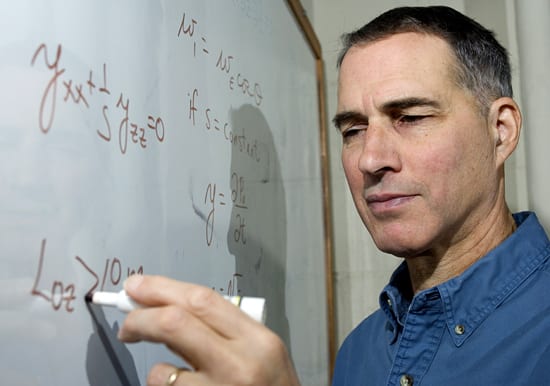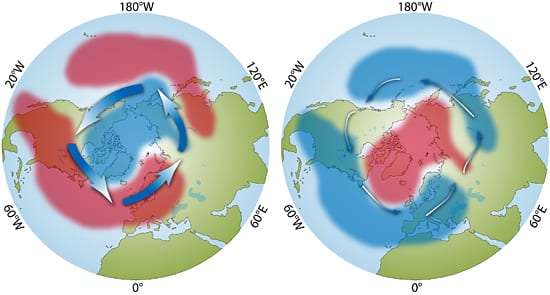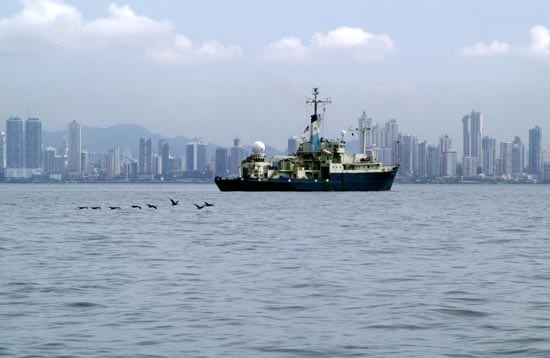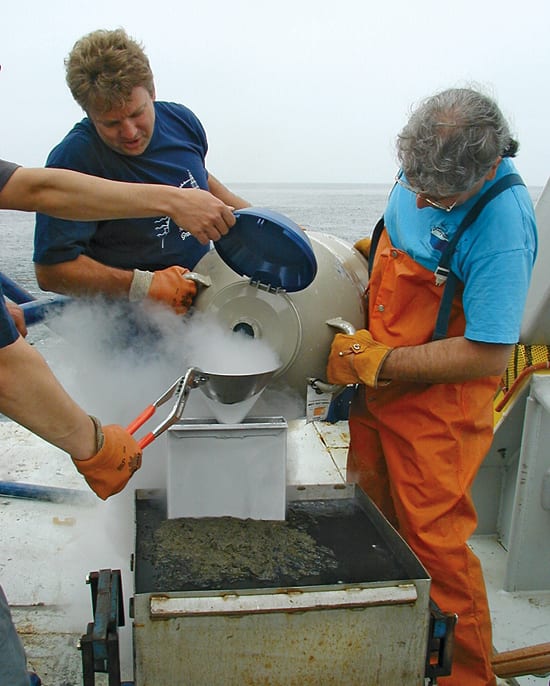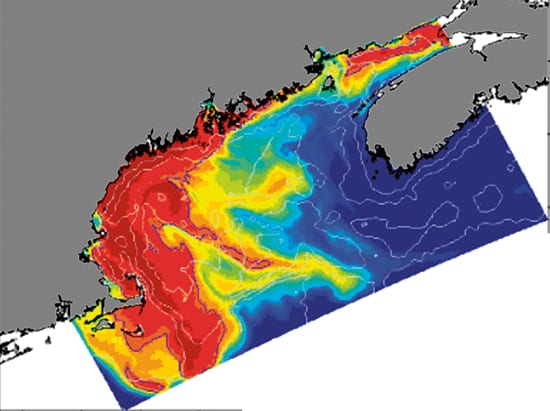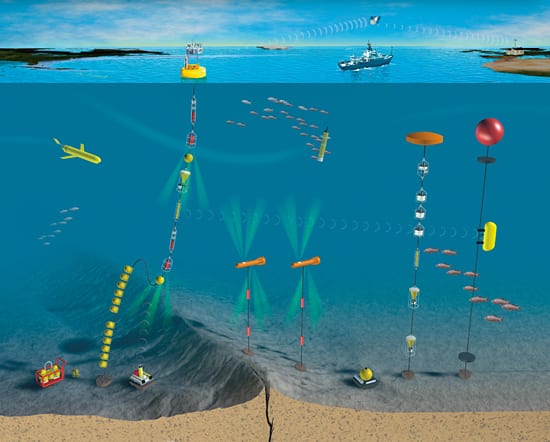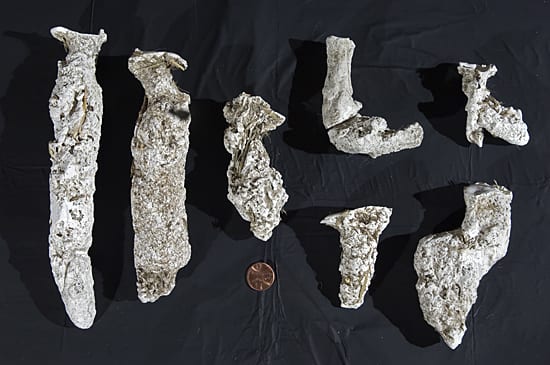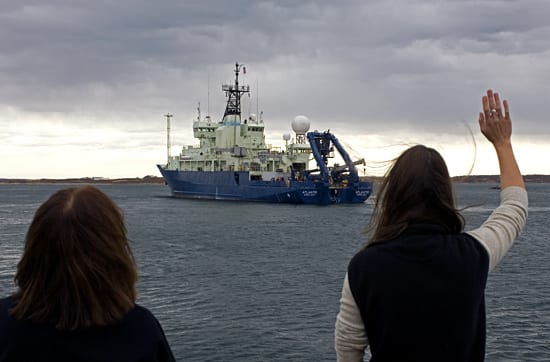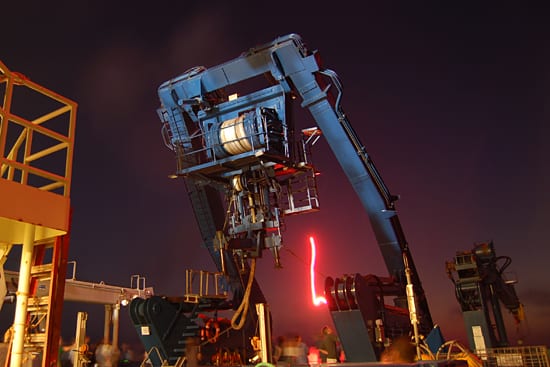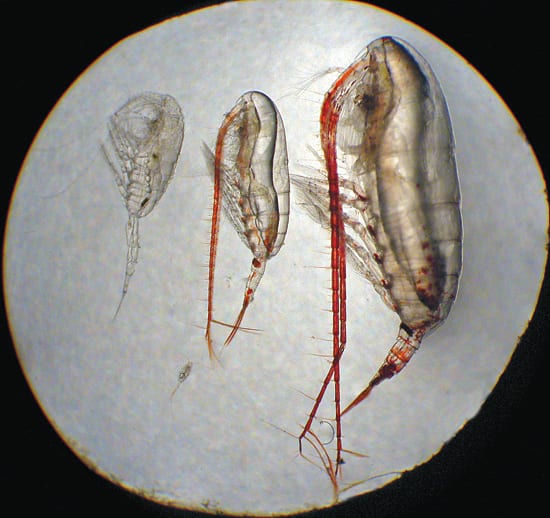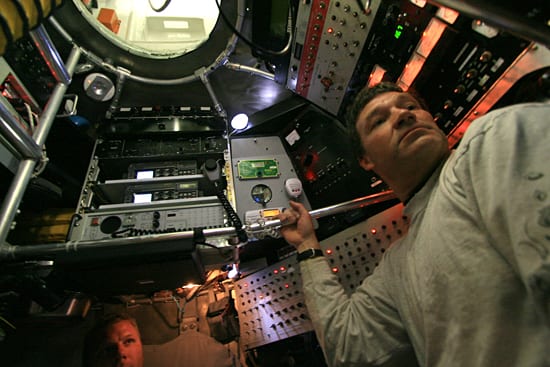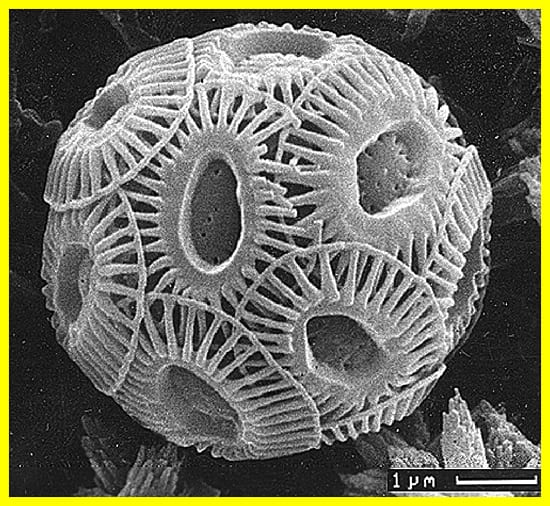Multimedia Items
Ready to Go Camping
Associate Scientist Hanumant Singh examines his new “Camper” the CAMera and samPlER sled a tethered, remotely operated vehicle (ROV) that was specially developed for research under the Arctic ice cap.…
Read MoreNo Stone Unturned
Joel Llopiz is trying to understand why New England river herring are making a slow comeback by examining a tiny stone in their head.
Read MoreBring ‘Em Home
Shipboard science services technician Ken Feldman (left) and ordinary seaman Patrick Neumann work to deploy a sea anchor as part of the process of “recovering” Alvin (bringing it back onto…
Read MoreFalling Water
MIT/WHOI Joint Program student Casey Saenger soaks up the mist of the Oxafoss waterfall in Thingvellir National Park during the spring 2006 Geodynamics Field Trip to Iceland. The field trips…
Read MorePractice Makes Perfect
WHOI engineering assistants Kris Newhall (left) and John Kemp pose in August 2004 with their gear after practicing the deployment of the winch and tripod support frame that they use…
Read MoreTime to Come Out
Looking fresh and bright after a year in cold water, an acoustic doppler current profiler (ADCP) emerges from Hudson Strait, onto the Canadian Coast Guard Ship Pierre Radisson. The ADCP,…
Read MoreUsing Rocks as Time Machines
Clare M. Williams a graduate student in the MIT/WHOI Joint Program, examines a rock collected from the seafloor to analyze its magnetic properties. Magnetism lets her unravel the patterns of lava flows to…
Read More“Puffs” Fertilize the Sea
While towing a Video Plankton Recorder essentially a microscope-plus-video camera slowly across the Atlantic, (“like driving a lawnmower”), scientists found colonies like these fragile “puffs” were more abundant than previously…
Read MoreHunting for Carbon Dioxide
For weeks WHOI graduate student Naomi Levine and colleagues worked around the clock in the chilly South Atlantic aboard the NOAA research vessel Ronald H. Brown. They took samples of ocean water from many…
Read MoreWell-armed for Life
Researchers found this six-inch squid, called Histioteuthis sp., at about 1,000 meters (3,000 feet), where almost no sunlight penetrates. Adapted to midwater life, it has spots that let it change…
Read MoreClimate Chowder
17,500-year-old shells from a clam found in North Atlantic seafloor sediment helped WHOI geologist Lloyd Keigwin learn about ocean circulation and climate changes. Clams and other shelled organisms incorporate the…
Read MoreIt All Adds Up
WHOI oceanographer Jim Ledwell has been selected as the winner of the2007 Alexander Agassiz Medal, awarded by the U.S. National Academy of Sciences. Ledwell, a senior scientist in the Department of Applied…
Read MoreClimate Seesaw
The severity of wintertime climate over North America and Europe is strongly linked to the most prominent atmospheric pattern in the Northern Hemisphere, a seesaw exchange of air massed called…
Read MoreR/V Knorr
Putting History on Ice
WHOI paleoceanographer Konrad Hughen (left) and WHOI research associate Daniel Montlucon pour liquid nitrogen into sediments retrieved from the seafloor to freeze and preserve them. Sediments accumulate over time in…
Read MoreColor Coding
WHOI scientists Dennis McGillicuddy and Ruoying He created a computer simulation of the historic 2005 toxic algae bloom in New England. Red denotes high algae concentrations; blue the lowest. Algal cells…
Read MoreThe Next Wave
Oceanography is on the verge of a revolution. Instead of sporadic, expeditionary glimpses of the ocean from ships and subs, oceanographers would like to establish a permanent presence in the…
Read MoreDigging Into Pollution Problems
Plaster of Paris casts of the burrows of salt marsh fiddler crabs show how crabs from a healthy marsh (left side) dig straighter and deeper holes than those burrowing into…
Read MoreR/V Atlantis
R/V Atlantis
Rocket’s Red Glare
Fireworks light up the sky above the Pacific Ocean on New Year’s Eve 2006. Actually, the red streak was a flare fired during a safety drill. Crew members on the…
Read MoreCoping Pods
The four major species of copepods in the Beaufort Sea all have different sizes, different life cycles, and different prey. L to R: Metridia longa (~2.5 millimeters), Calanus glacialis (~4mm),…
Read MoreInside Edition
Alvin pilot Mark Spear conducts show-and-tell for new crew members as they sit inside the Alvin submersible, which was housed in its hangar on the research vessel Atlantis for an…
Read MoreAlgae Thermometer
One species of marine alga, Emiliania huxleyi, almost exclusively produces lipids called alkenones, which have proven quite useful for scientists tracking the movement of carbon through the oceans. Alkenones preserved…
Read More
